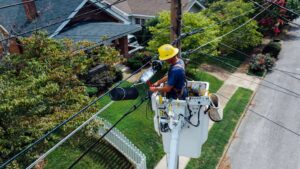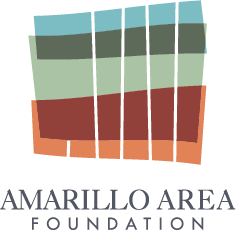
What do daycare providers, foster care services, and the criminal justice system have in common? No, it isn’t the lead-up to a lame punchline! Each of these programs, despite the diversity of the services they provide, serve a population known as Opportunity Youth.

Opportunity Youth are defined as youth between the ages of 16-24 who are disconnected from education and the workforce. Prior to 2020, the national average of Opportunity Youth was 11%, in Texas it was 13%, and in rural Texas, it was 27%. Although the broad impacts of the Covid-19 pandemic on this population are not yet fully understood, it is safe to assume that those percentages went up rather than down. While there is no system currently in place for tracking these individuals in the Texas Panhandle, we do know that after high school graduation we lose track of about half of our students, meaning they do not go on to enroll in a postsecondary institution and they are not trackable in the workforce.
These individuals are called “opportunity youth” because of the immense opportunity they present to alter the trajectory of their own lives as well as those of their families and communities. Additionally, the potential economic impact of opportunity youth is significant. In the Houston area alone, it is estimated that the lost earning potential of opportunity youth is $27 billion. Connected youth are 9 times more likely to have medical coverage and 45% more likely to own a home. This population represents a significant boon to their local economies if they can be reconnected. They are hard-working, intelligent, and resilient, but they are growing up in a world where having a post-secondary credential of value is crucial for earning a family-sustaining wage after high school, and many of them do not have the support necessary to pursue this goal.

Imagine growing up in the foster care system and aging out, coming out of your teen years into a world with little or no familial support, or being a young mother for whom childcare costs more than you would make in an entry-level position. Imagine trying to enter the workforce after being involved in the juvenile justice system or trying to complete high school as part of our unhoused population. Put yourself in the shoes of someone navigating the world of higher education as a first-gen student while trying to help provide for family and keep the lights on. These are only a few of the situations which might cause a young person to join the ranks of opportunity youth.
Throughout the nation and the state of Texas, there are initiatives and programs working to identify, learn about, and consolidate services for these young people. One thing that these initiatives have learned is that often multiple providers will have interactions with the same individual, but due to programs operating in silos, those providers remain unaware of the overlap. This makes it difficult not only to track opportunity youth and the exact services they need, but also to refer them to programs designed specifically for their population. It is critical that we harness the potential of this overlap in services, as experts in this area have also learned that it often takes more than one touchpoint to effectively reconnect someone in the opportunity youth population with school or work.

I recently had the opportunity to see the Texas Panhandle from the air for the first time in almost 20 years. The geometric patchwork quilt of farmland and roads is broken here and there by riverbeds and mesas. The most dramatic geographic feature of our region is the Palo Duro Canyon. Cutting through the plains like a deeply set scar of red dirt and mesquite. It is the second-largest canyon in the continental U.S. As an Amarillo native, I have spent countless days in the summer heat hiking through the canyon with family and friends. When I was younger, my mom would splurge on a state park pass so that we could go at least once a week. I remember the enthusiasm shared between her and my brother, who loved to go up and down the canyon walls during our explorations. I was terrified of heights, so I learned early on to ground myself by three points if I felt nervous or wobbly. These points of connection made me feel safe and tethered when I felt I would otherwise fly off into oblivion. This is the work of reconnecting Opportunity Youth: through collaboration and innovation, our regional service providers can work together to create multiple touchpoints for individuals seeking workforce and educational opportunities.
 It will be crucial for the Texas Panhandle to begin working to reconnect this population in the next five to ten years. As our rural population ages, we cannot afford to lose 25-50% of our young people. In response to this, the Amarillo Area Foundation has made Opportunity Youth a part of our impact goals for our work moving forward. As part of this work, we hope to engage the community of the Texas Panhandle in raising awareness of Opportunity Youth and creating a collaborative network of providers who are already serving this population with the goal of converging and amplifying the amazing work they are already doing.
It will be crucial for the Texas Panhandle to begin working to reconnect this population in the next five to ten years. As our rural population ages, we cannot afford to lose 25-50% of our young people. In response to this, the Amarillo Area Foundation has made Opportunity Youth a part of our impact goals for our work moving forward. As part of this work, we hope to engage the community of the Texas Panhandle in raising awareness of Opportunity Youth and creating a collaborative network of providers who are already serving this population with the goal of converging and amplifying the amazing work they are already doing.


